|
Aricia agestis / Brown Argus
Flatrakafejta bordurëkuqe
Lycaenidae - Polyommatinae
Aricia agestis ([Denis & Schiffermüller], 1755) TL: Vienna, Austria.
 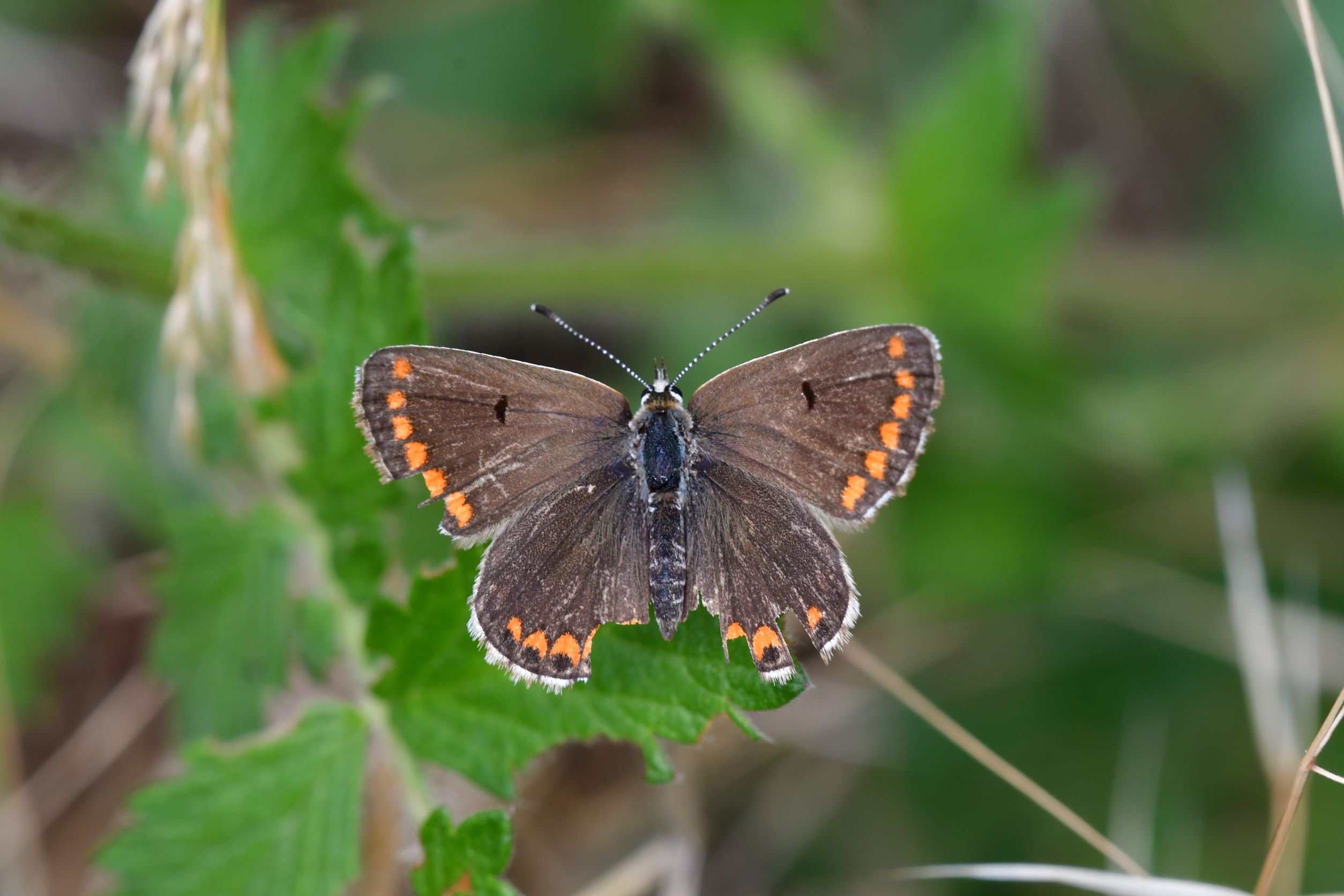
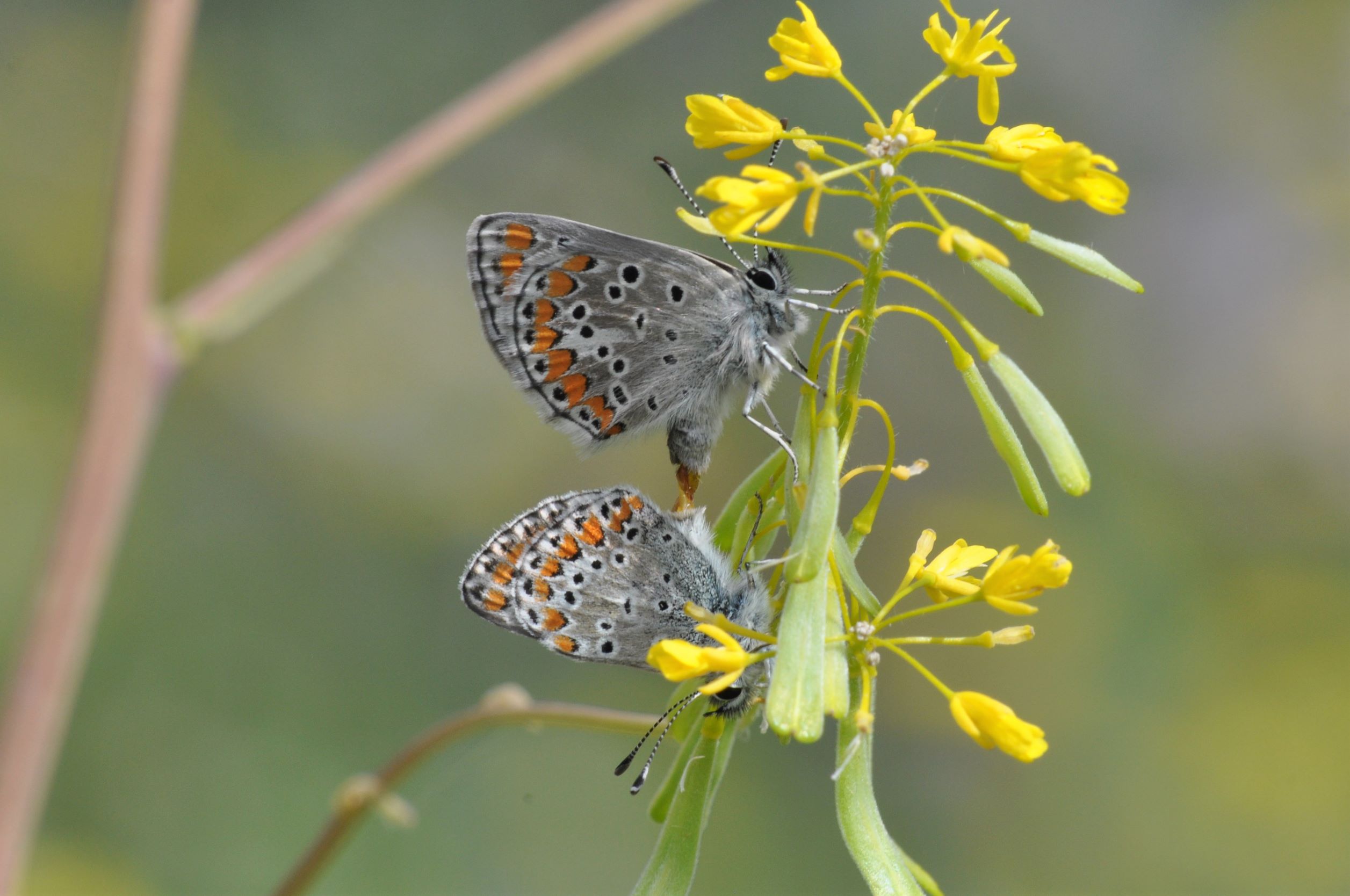 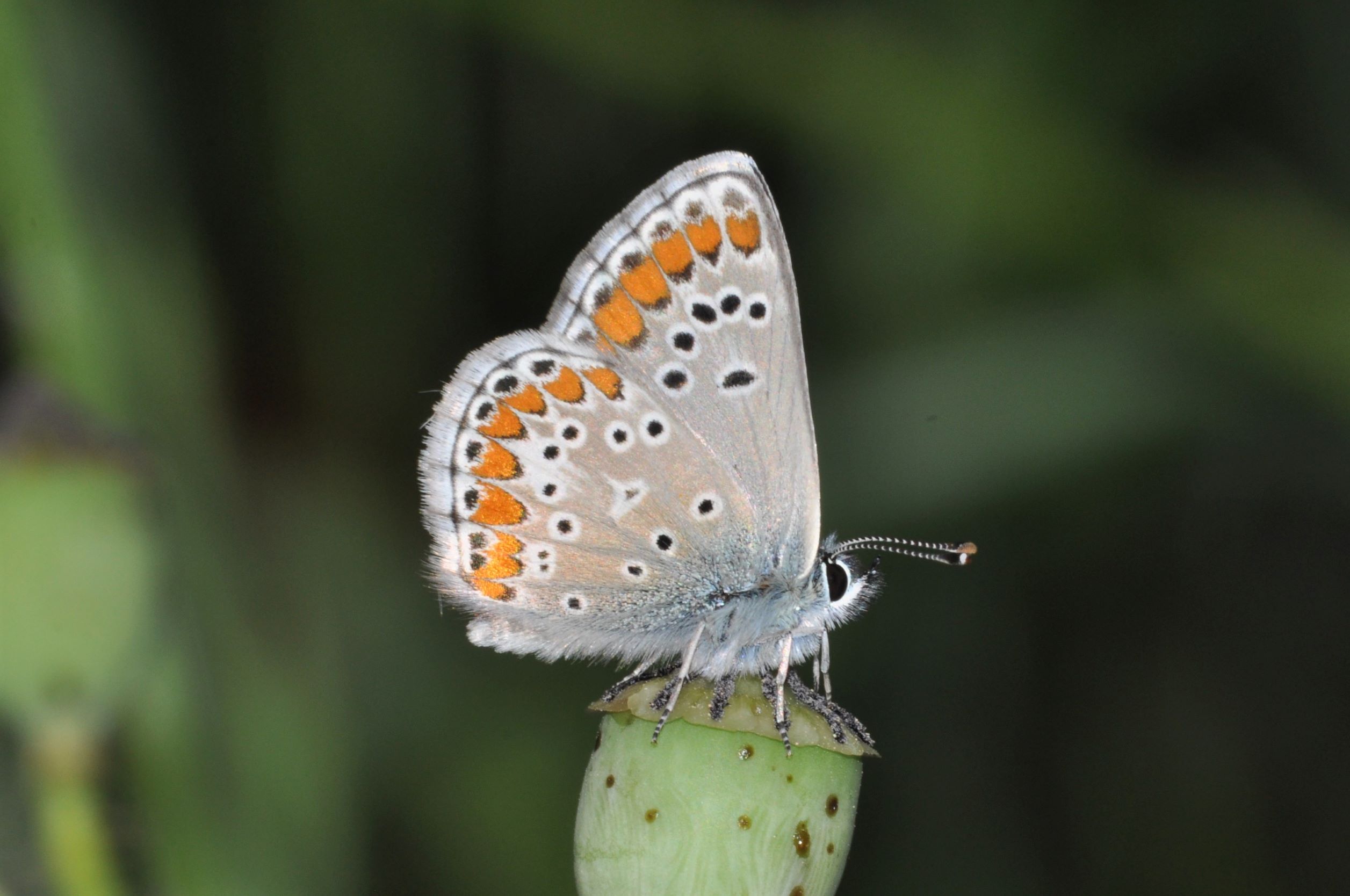
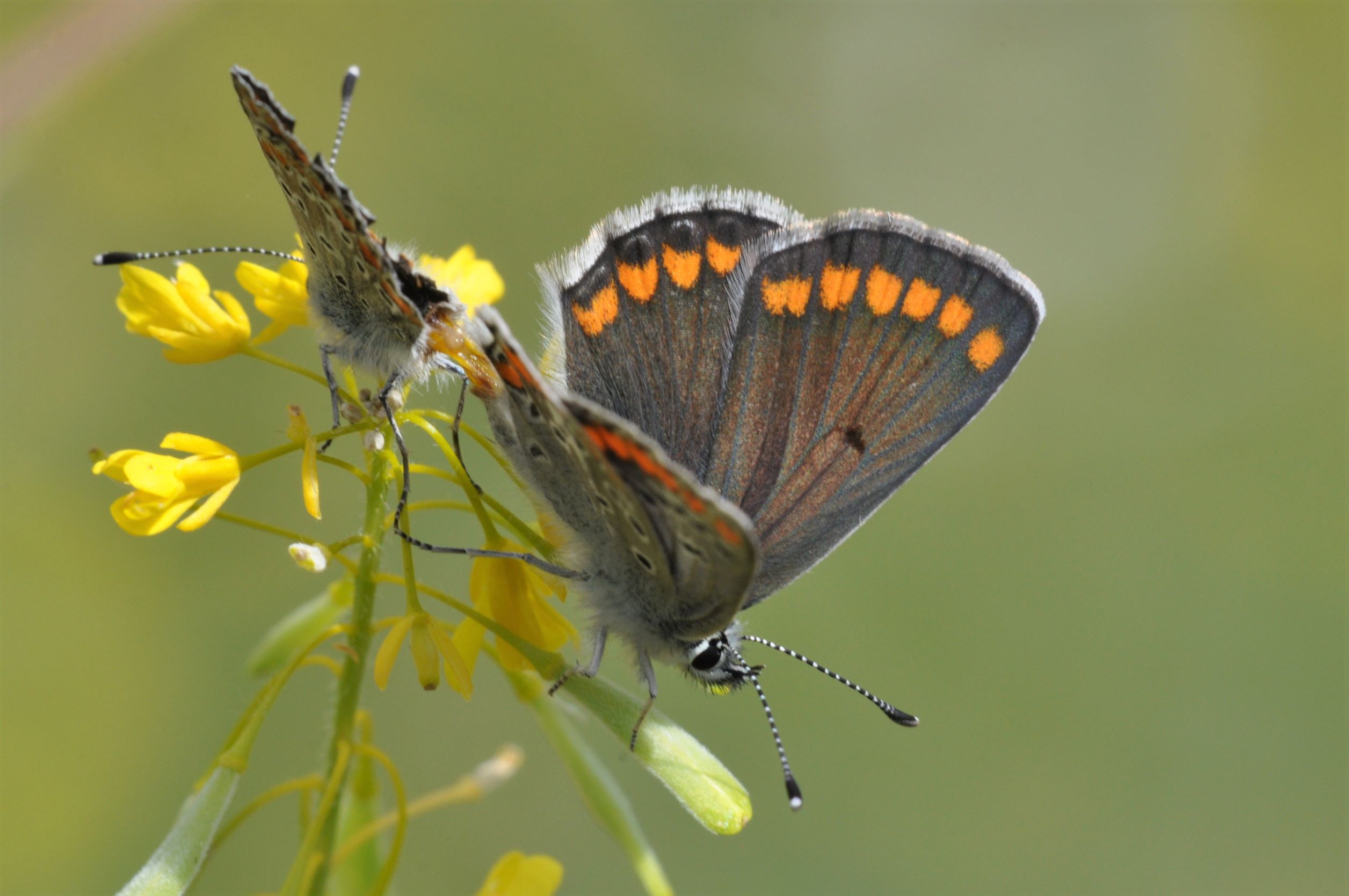 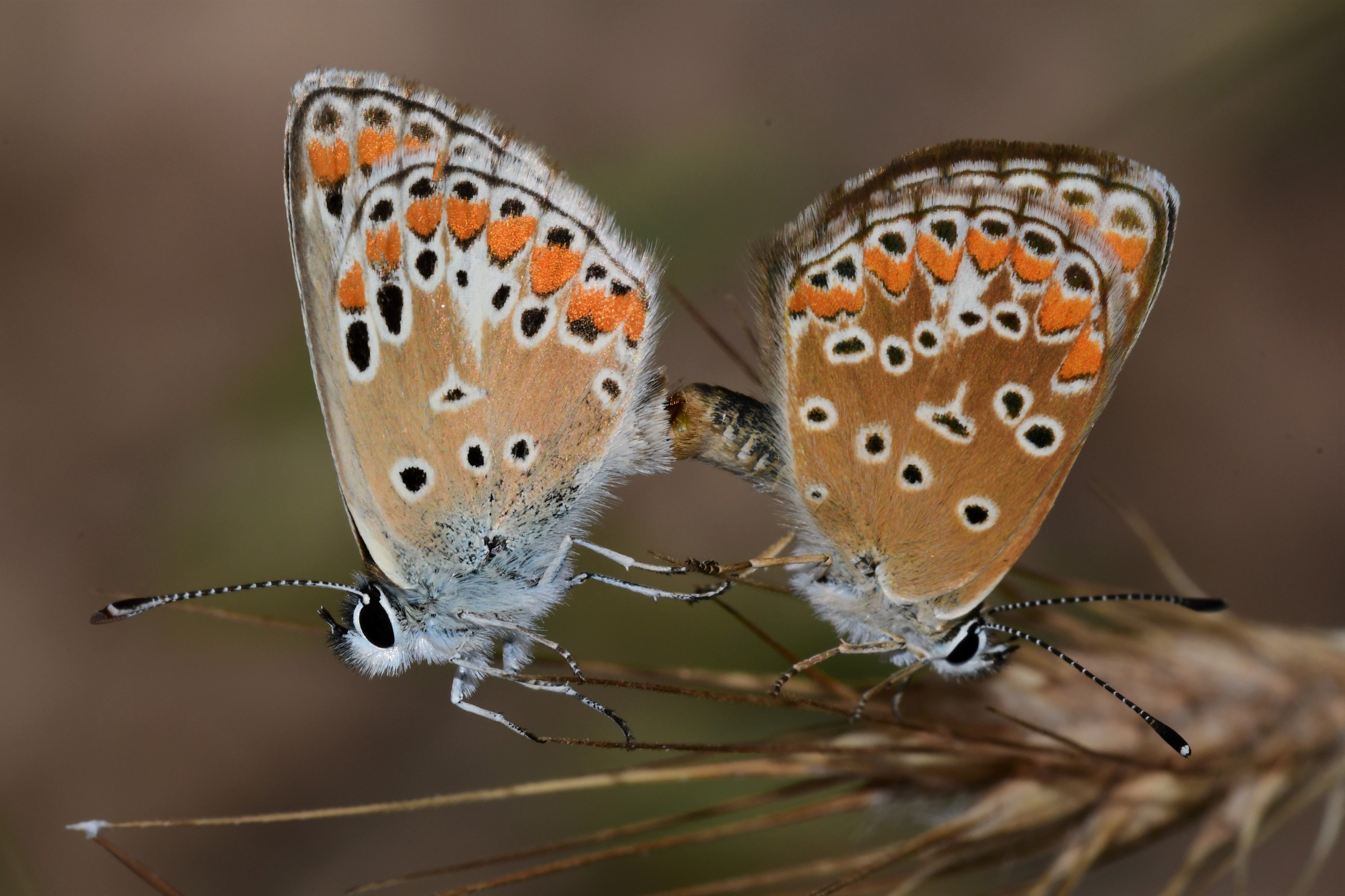
1a. Aricia agestis, distribution map (09.i.2025).  Historical data ; Historical data ;  Additional data from the 2018 update ; Additional data from the 2018 update ;  New observations since the 2018 update. New observations since the 2018 update.
1b. Aricia agestis ♂ upperside. Gurshpatë, Albania (© Sylvain Cuvelier)
1c. Aricia agestis copula. Greece (© Sylvain Cuvelier)
1d. Aricia agestis ♂ underside. Greece (© Sylvain Cuvelier)
1e. Aricia agestis ♀ upperside. Greece (© Sylvain Cuvelier)
1f. Aricia agestis copula. Slightly aberrant ♂. Vig, Albania (© Sylvain Cuvelier)
Description
♂♂
Small butterfly. Fw: 12-14 mm.
Ups: dark brown gc with orange lunules usually in complete series on fw and hw.
Upf: discal spot, apex pointed.
Uns: grey to light grey-brown gc, usually a complete series of bright orange submarginal lunules on fw and hw.
Unf: no cellular spot, white ringed dsical and postdiscal spots.
Unh: postdiscal spot in s6 displaced towards the base, white mark on v4 often conspicuous.
♀♀
Slightly larger.
Upf: apex less pointed.
Ups: often larger orange lunules in complete series on fw and hw.
Uns: often larger and brighter orange lunules in complete series on fw and hw.
Unf: no cellular spot.
Similar species
Aricia have a postdiscal spot in s6 that is clearly displaced to the base.
This
is useful to check versus similar looking Polyommatinae (e.g. Polyommatus icarus ♀♀)
Aricia artaxerxes
No reliable constant distinctive character.
If possible check a number of specimens.
Genitalia are discriminating.
Fw:  straight costa + pointed apex. straight costa + pointed apex.
Upf:  reduced, blurred or absent orange lunules. reduced, blurred or absent orange lunules.
Upf:  discal dot. discal dot.
Upf:  black-brown gc. black-brown gc.
Uph:  reduced, blurred or absent orange lunules. reduced, blurred or absent orange lunules.
Uph:  orange lunules bordered by black dots. orange lunules bordered by black dots.
Unf:  no cell-spot. no cell-spot.
Unh:  displaced pd spot in s6. displaced pd spot in s6.
Uns:  often pale yellow-grey gc. often pale yellow-grey gc.
Aricia anteros
Ups:  fainter orange lunules. fainter orange lunules.
Upf:  ♂♂ gleaming pale blue gc. ♂♂ gleaming pale blue gc.
Upf:  ♂♂ and ♀♀ discal dot. ♂♂ and ♀♀ discal dot.
Upf:  ♀♀ black marginal dots. ♀♀ black marginal dots.
Uph:  pale grey lines along black marginal spots. pale grey lines along black marginal spots.
Unf:  no cell-spot. no cell-spot.
Uns:  yellowish-brown gc. yellowish-brown gc. |
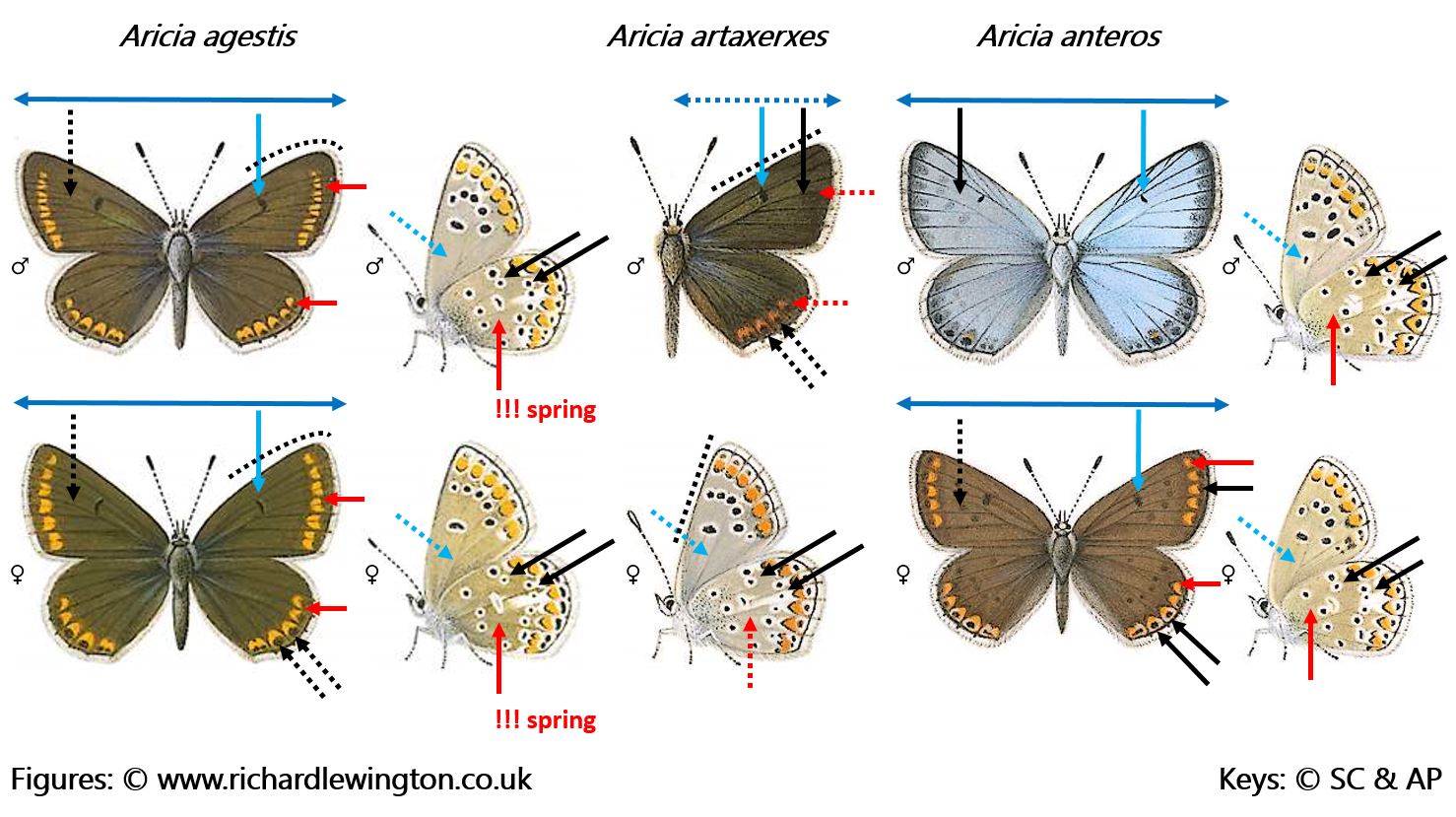 |
Life cycle
Adults: continuous generations from end-March to October.
Egg: 4-8 days.
Caterpillar: overwintering in the litter layer as L3 larva, feeding again in spring.
Pupa: 11-22 days.
Habitat
Aricia agestis inhabits a large variety of open places from lowland up to 1650 m a.s.l.
Spatial requirement modes, population density moderate, nomadic.
Foodplants
Caterpillars feed mainly on Erodium sp., Geranium sp., Lotus corniculatus and Helianthemum sp., also mentioned are Medicago sp. and Tuberaria guttata.
Butterflies feed on a large variety of flowers.
Distribution
Albania: widespread.
Balkan: AL - BG - BIH - GR - HR - NMK - MNE - RKS - RO - SLO - SRB
Europe: IB - IT - ALP - BAL - NWE - UK* - SCA* - EEU
Asia Minor, Near East, Transcaucasia, Caucasus and further east.
Conservation status
Aricia agestis is not endangered.
Albanian Red List: NE.
IUCN Red List, category at the Mediterranean level: LC.
Useful links
Bink 2015
Pyrgus.de
Lepiforum
Euroleps
|
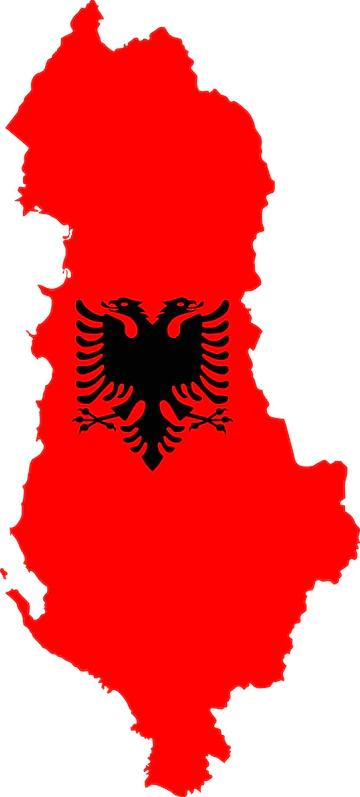 xx
xx 

 Historical data ;
Historical data ;  Additional data from the 2018 update ;
Additional data from the 2018 update ;  New observations since the 2018 update.
New observations since the 2018 update.